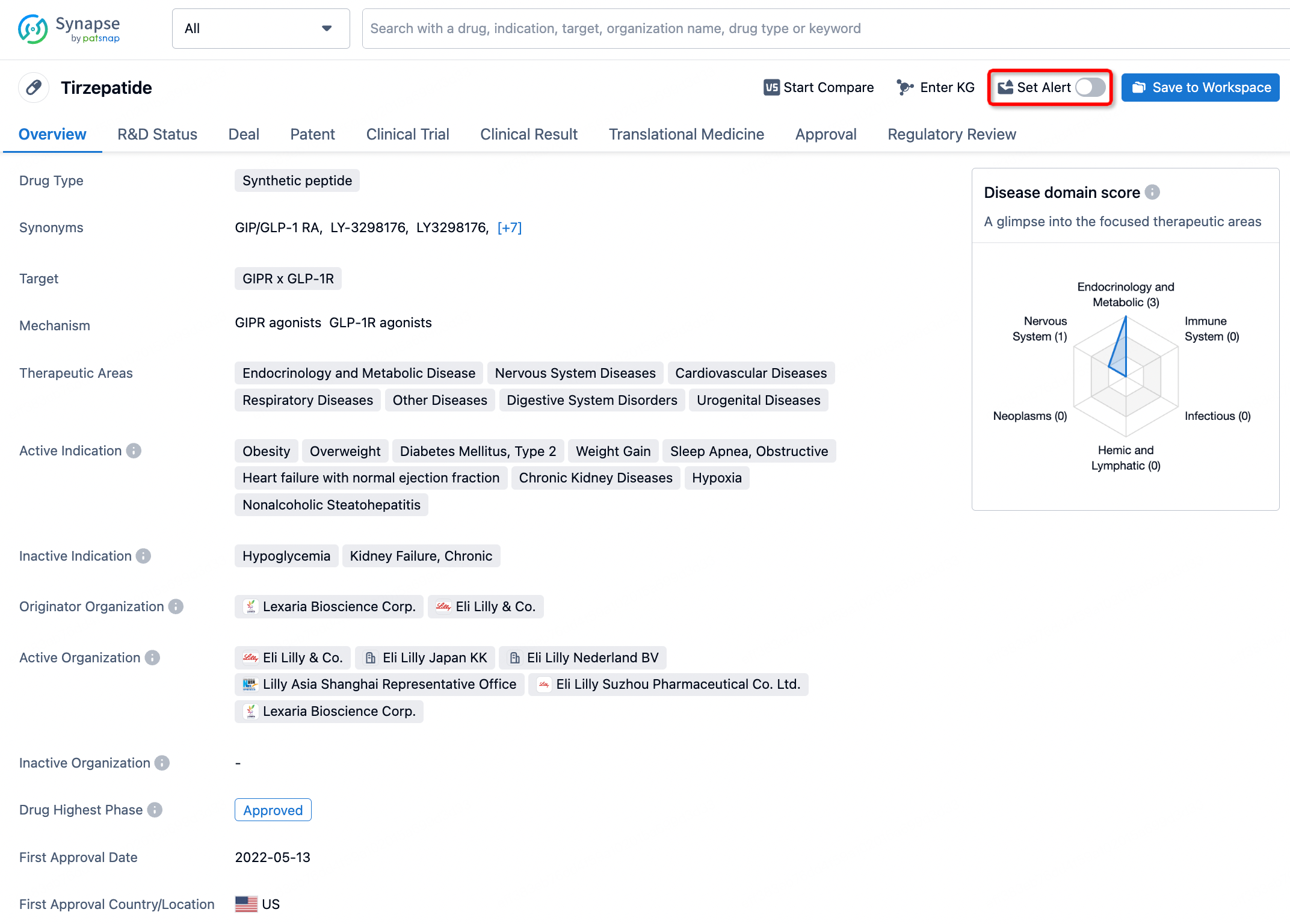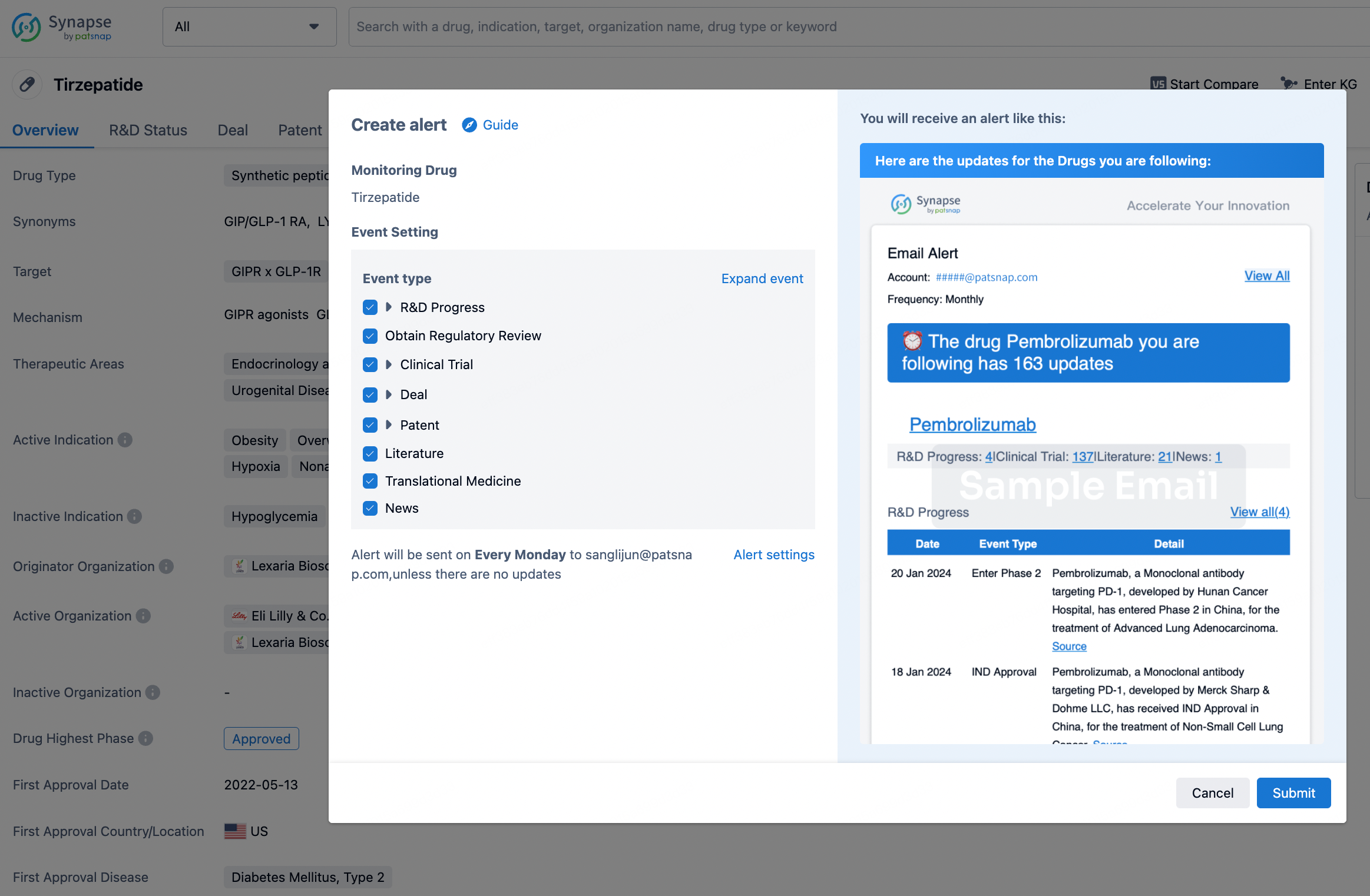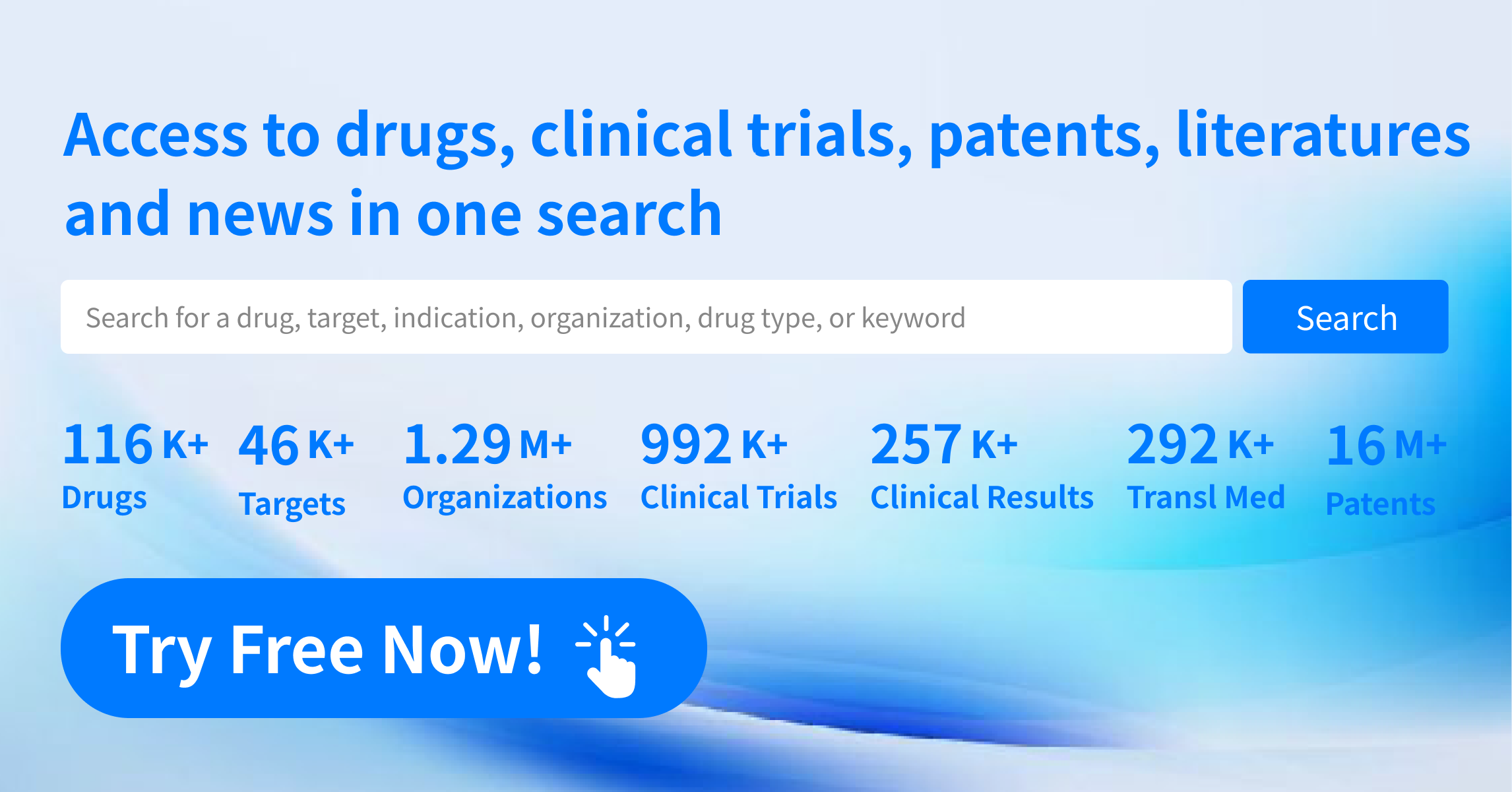Request Demo
What is Quinfamide used for?
15 June 2024
Quinfamide is a medication primarily used for its anti-parasitic properties, specifically targeting certain types of intestinal worms. It falls under the classification of anti-amebic agents and has been utilized in the treatment of amoebiasis, a condition caused by the parasite Entamoeba histolytica. This drug has been marketed under various trade names and has seen considerable use in regions where amoebiasis is endemic.
Quinfamide was first introduced and researched by pharmaceutical companies looking to develop effective treatments for parasitic infections that were common in tropical and subtropical areas. The development of Quinfamide has had significant implications for public health, particularly in areas with inadequate sanitation and limited access to medical care. While not as widely known as some other anti-parasitic drugs, Quinfamide has played a crucial role in the management of parasitic infections. Its effectiveness has been substantiated through various clinical trials and research studies, and it continues to be a valuable asset in the fight against parasitic diseases.
### Quinfamide Mechanism of Action
The mechanism of action of Quinfamide involves its interaction with the parasitic cells, leading to their death and subsequent removal from the host's body. Quinfamide targets the trophozoite stage of Entamoeba histolytica, which is the active, feeding stage of the parasite.
Once administered, Quinfamide is absorbed in the gastrointestinal tract and delivered to the site of infection. It interferes with the parasite's metabolic processes, particularly by inhibiting the synthesis of essential proteins and nucleic acids required for its survival. This disruption causes the parasite to lose its ability to reproduce and maintain its cellular structure, ultimately leading to its death.
Quinfamide's specific targeting of the trophozoite stage is particularly advantageous as this is the stage responsible for the symptoms and tissue damage associated with amoebiasis. By effectively eliminating these active parasites, Quinfamide helps to alleviate symptoms and prevent the spread of the infection within the host.
### How to Use Quinfamide
Quinfamide is typically administered orally, and the dosage depends on several factors, including the severity of the infection, the patient's age, and overall health. For adults, a common regimen involves a single dose, usually taken with food to enhance absorption and minimize gastrointestinal discomfort. Pediatric dosing is adjusted according to the child's weight and age, and it is crucial to follow the prescribed dosing instructions provided by a healthcare professional.
The onset of action for Quinfamide is relatively rapid, with therapeutic concentrations being achieved within a few hours of administration. Patients usually start to notice an improvement in symptoms within a couple of days, although the complete eradication of the parasite may take a little longer. It is essential to complete the full course of treatment, even if symptoms improve earlier, to ensure that the infection is thoroughly eliminated and to prevent recurrence or resistance development.
In cases where the infection is particularly severe or has caused complications, additional treatments or a prolonged course of Quinfamide may be necessary. As with any medication, it is vital to adhere to the prescribed regimen and consult a healthcare provider with any concerns or if there is no noticeable improvement within the expected timeframe.
### What are Quinfamide Side Effects
While Quinfamide is generally well-tolerated, like all medications, it can cause side effects in some individuals. Common side effects include gastrointestinal disturbances such as nausea, vomiting, abdominal pain, and diarrhea. These symptoms are usually mild and transient, resolving on their own without the need for specific treatment.
In rare cases, patients may experience more severe side effects, including allergic reactions, which could manifest as rash, itching, swelling, dizziness, or difficulty breathing. If any of these symptoms occur, it is imperative to seek immediate medical attention.
Contraindications for the use of Quinfamide primarily include known hypersensitivity to the drug or any of its components. Additionally, caution should be exercised when prescribing Quinfamide to individuals with pre-existing liver or renal conditions, as the drug is metabolized and excreted through these organs. It is always advisable for patients to inform their healthcare provider of any existing medical conditions or medications they are taking before starting treatment with Quinfamide.
### What Other Drugs Will Affect Quinfamide
Quinfamide can interact with other medications, potentially altering its effectiveness or increasing the risk of adverse effects. Therefore, it is crucial to inform healthcare providers of all medications being taken, including prescription drugs, over-the-counter medicines, and herbal supplements.
Co-administration with other anti-parasitic or antimicrobial agents may lead to synergistic or antagonistic effects, impacting the overall efficacy of the treatment. For example, combining Quinfamide with other medications targeting similar pathways may enhance the anti-parasitic effect, but it could also increase the likelihood of side effects.
Additionally, drugs that affect liver enzymes, particularly those involved in drug metabolism such as cytochrome P450 enzymes, may influence the pharmacokinetics of Quinfamide. Medications like antifungals, anticonvulsants, and certain antibiotics can either inhibit or induce these enzymes, potentially leading to increased toxicity or reduced therapeutic effect of Quinfamide.
Patients should avoid alcohol while taking Quinfamide, as it can exacerbate gastrointestinal side effects and may interfere with the drug's action. It is also advisable to monitor for any signs of unusual reactions or interactions and report them to a healthcare provider promptly.
In conclusion, Quinfamide remains a critical drug in the treatment of amoebiasis, offering a targeted approach to eliminate the causative parasite. Its administration should be carefully managed to ensure optimal results and minimize the risk of side effects and drug interactions. As with any medication, adherence to prescribed guidelines and open communication with healthcare providers are key factors in achieving the best therapeutic outcomes.
Quinfamide was first introduced and researched by pharmaceutical companies looking to develop effective treatments for parasitic infections that were common in tropical and subtropical areas. The development of Quinfamide has had significant implications for public health, particularly in areas with inadequate sanitation and limited access to medical care. While not as widely known as some other anti-parasitic drugs, Quinfamide has played a crucial role in the management of parasitic infections. Its effectiveness has been substantiated through various clinical trials and research studies, and it continues to be a valuable asset in the fight against parasitic diseases.
### Quinfamide Mechanism of Action
The mechanism of action of Quinfamide involves its interaction with the parasitic cells, leading to their death and subsequent removal from the host's body. Quinfamide targets the trophozoite stage of Entamoeba histolytica, which is the active, feeding stage of the parasite.
Once administered, Quinfamide is absorbed in the gastrointestinal tract and delivered to the site of infection. It interferes with the parasite's metabolic processes, particularly by inhibiting the synthesis of essential proteins and nucleic acids required for its survival. This disruption causes the parasite to lose its ability to reproduce and maintain its cellular structure, ultimately leading to its death.
Quinfamide's specific targeting of the trophozoite stage is particularly advantageous as this is the stage responsible for the symptoms and tissue damage associated with amoebiasis. By effectively eliminating these active parasites, Quinfamide helps to alleviate symptoms and prevent the spread of the infection within the host.
### How to Use Quinfamide
Quinfamide is typically administered orally, and the dosage depends on several factors, including the severity of the infection, the patient's age, and overall health. For adults, a common regimen involves a single dose, usually taken with food to enhance absorption and minimize gastrointestinal discomfort. Pediatric dosing is adjusted according to the child's weight and age, and it is crucial to follow the prescribed dosing instructions provided by a healthcare professional.
The onset of action for Quinfamide is relatively rapid, with therapeutic concentrations being achieved within a few hours of administration. Patients usually start to notice an improvement in symptoms within a couple of days, although the complete eradication of the parasite may take a little longer. It is essential to complete the full course of treatment, even if symptoms improve earlier, to ensure that the infection is thoroughly eliminated and to prevent recurrence or resistance development.
In cases where the infection is particularly severe or has caused complications, additional treatments or a prolonged course of Quinfamide may be necessary. As with any medication, it is vital to adhere to the prescribed regimen and consult a healthcare provider with any concerns or if there is no noticeable improvement within the expected timeframe.
### What are Quinfamide Side Effects
While Quinfamide is generally well-tolerated, like all medications, it can cause side effects in some individuals. Common side effects include gastrointestinal disturbances such as nausea, vomiting, abdominal pain, and diarrhea. These symptoms are usually mild and transient, resolving on their own without the need for specific treatment.
In rare cases, patients may experience more severe side effects, including allergic reactions, which could manifest as rash, itching, swelling, dizziness, or difficulty breathing. If any of these symptoms occur, it is imperative to seek immediate medical attention.
Contraindications for the use of Quinfamide primarily include known hypersensitivity to the drug or any of its components. Additionally, caution should be exercised when prescribing Quinfamide to individuals with pre-existing liver or renal conditions, as the drug is metabolized and excreted through these organs. It is always advisable for patients to inform their healthcare provider of any existing medical conditions or medications they are taking before starting treatment with Quinfamide.
### What Other Drugs Will Affect Quinfamide
Quinfamide can interact with other medications, potentially altering its effectiveness or increasing the risk of adverse effects. Therefore, it is crucial to inform healthcare providers of all medications being taken, including prescription drugs, over-the-counter medicines, and herbal supplements.
Co-administration with other anti-parasitic or antimicrobial agents may lead to synergistic or antagonistic effects, impacting the overall efficacy of the treatment. For example, combining Quinfamide with other medications targeting similar pathways may enhance the anti-parasitic effect, but it could also increase the likelihood of side effects.
Additionally, drugs that affect liver enzymes, particularly those involved in drug metabolism such as cytochrome P450 enzymes, may influence the pharmacokinetics of Quinfamide. Medications like antifungals, anticonvulsants, and certain antibiotics can either inhibit or induce these enzymes, potentially leading to increased toxicity or reduced therapeutic effect of Quinfamide.
Patients should avoid alcohol while taking Quinfamide, as it can exacerbate gastrointestinal side effects and may interfere with the drug's action. It is also advisable to monitor for any signs of unusual reactions or interactions and report them to a healthcare provider promptly.
In conclusion, Quinfamide remains a critical drug in the treatment of amoebiasis, offering a targeted approach to eliminate the causative parasite. Its administration should be carefully managed to ensure optimal results and minimize the risk of side effects and drug interactions. As with any medication, adherence to prescribed guidelines and open communication with healthcare providers are key factors in achieving the best therapeutic outcomes.
How to obtain the latest development progress of all drugs?
In the Synapse database, you can stay updated on the latest research and development advances of all drugs. This service is accessible anytime and anywhere, with updates available daily or weekly. Use the "Set Alert" function to stay informed. Click on the image below to embark on a brand new journey of drug discovery!
AI Agents Built for Biopharma Breakthroughs
Accelerate discovery. Empower decisions. Transform outcomes.
Get started for free today!
Accelerate Strategic R&D decision making with Synapse, PatSnap’s AI-powered Connected Innovation Intelligence Platform Built for Life Sciences Professionals.
Start your data trial now!
Synapse data is also accessible to external entities via APIs or data packages. Empower better decisions with the latest in pharmaceutical intelligence.


